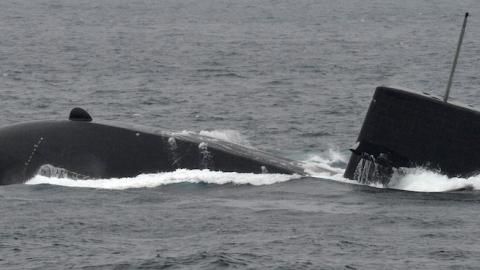Australia's long-awaited decision to buy up to 12 Soryu-class submarines from Japan has struck another problem: Labor unions are pressuring Prime Minister Tony Abbott to open the bidding to replace the country's old Collins-class fleet to international competition.
The 35 billion Australian dollars ($30.3 billion) Soryu deal was supposed to be a high point in Japan-Australia relations. Instead, it has become a sore spot between both governments. Indeed, if Abbott does open the competition to German company HDW, which is building similar vessels for Singapore, and the Swedish company Saab, which is eager to enter the fray, Japan has said it might not resubmit.
This would only compound Abbott's mistake of backing out of the original deal. There's more at stake here than selling or building submarines. This deal is really about the Japanese-Australian strategic alliance for military technologies of the future, and in letting Australia take advantage of the sophisticated defense systems both Japan and the U.S. will bring to the deal and collective security in the Pacific.
Criticisms
Critics point out that the new submarines will be largely built in Japan, not in Australian yards; that they have half the range of the Collins class and don't carry any additional torpedoes and missiles; and that the A$36 billion to A$40 billion price seems too expensive when Canberra could buy off-the-shelf vessels from HDW or Saab for far less.
These criticisms miss the mark. That's because most people, including politicians, still think of a submarine as a discreet vessel that carries a crew and a certain number of torpedoes and missiles, and ventures out underwater to patrol, and if necessary sink ships and other submarines.
They're wrong. The modern submarine is actually nothing more than a hollow platform for computer software, the key to today's defense systems. From command and control and navigation to guidance and launch systems -- not to mention intelligence and surveillance -- the more sophisticated the software is, and the more network-integrated with other systems and components, including other submarines, the more effective a sub is for defense and deterrence.
Integrating systems
In fact, the real work in creating a modern military submarine doesn't happen in a shipyard anymore but at a software engineer's desk. In the event of war or a major confrontation it's the nation with the best programs and integrated weapons and combat systems, and the most-skilled operators, that wins.
When Australia originally built its Collins-class submarines in the early 1990s, it tried to buy and integrate those systems on its own. That proved to be a disaster. By buying Japanese this time, the Australians get access not only to the sophisticated systems that run the Soryu-class, but also to the potential of interoperability with American submarine and anti-submarine warfare.
The Soryu class is outfitted to take on U.S. weapons, combat systems and components. Subs built by Saab or HDW won't.
This is a major issue from the point of view of collective security. Australia's 12 submarines, like the rest of its navy, is hardly up to the challenge of deterring China's growing maritime might (which will include some 78 subs by 2020) -- but no one expects it to be. Yet by integrating its force seamlessly with those of the U.S. and Japan, Australia's brand-new fleet of Soryu-class subs would be a significant addition to providing sea control and deterrence across the region.
Future underwater technology
That future includes unmanned undersea vehicles, or UUVs. The limits on the range of Soryu subs won't matter much in a decade, when far-flung flotillas of unmanned submarine and surface vessels will be keeping a 24/7 watch on the vital choke points and channels in the South Pacific and Southwest Pacific.
The U.S. is today's leader in the development of UUVs; Japan is perfectly poised to be a leader as well. By joining with Japan and the U.S. in the Soryu project, Australia will have an advantage no other Asian country does, for joint venturing with the two countries who will be giants in the coming unmanned military revolution.
That advantage won't just appear in Asia. Over the next 25 years the U.S. Navy will be replacing the vast majority of its maritime and warfighting equipment, while upgrading the rest. With the lifting of its ban on exporting defense technology, Japan has a great opportunity to participate in that process. Australia could benefit too if it can get its mindset right and realize that buying submarines in 2015 isn't the same as buying them in 1945 -- and that the Soryu deal with Japan isn't just an investment in the nation's security in the next five years but rather far, far into the future.















